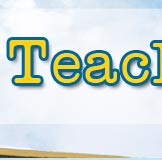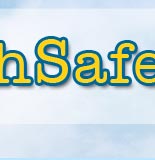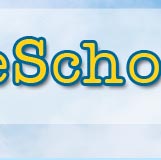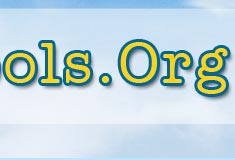VOCABULARY DEVELOPMENT
 Download and Print Vocabulary Development Booklet here (PDF) Download and Print Vocabulary Development Booklet here (PDF)
REFERENCES
American Federation of Teachers. (1999). Teaching Reading is a Rocket Science. Washington, DC: American Federation of Teachers.
Beck, I. L., & McKeown, M. (2000). Text talk: Capturing the benefits f read-aloud experiences. Unpublished manuscript, University of Pittsburgh.
Biemiller, A. (1999). Language and reading success. Cambridge, MA: Brookline Books.
Chall, J. S. (1996). Stages of reading development. Forth Worth, TX: Harcourt Brace College Publishers.
Darling-Hammond, L., & Sykes, G. (Eds.). (1999). Teaching is a learning profession: Handbook of policy and practice. San Francisco, CA: Jossey-Bass.
Hart, B., & Risley, T. R. (1997). Meaningful differences in the everyday experience of young American children. Baltimore, MD: Paul H. Brookes Publishing Co.
Nagy, W. E., & Anderson, R. C. (1984). How many words are there in printed school English? Reading Research Quarterly, 19, 304-330.
Meichenbaum, D., & Biemiller, A. (1998). Nurturing independent learners: Helping students take charge of their learning. Cambridge, MA: Brookline Books.
Snow, C. E., Burns, M. S., & Griffin, P. (eds.). (1998). Preventing reading difficulties in young children. Washington, DC: National Academy of Press.
Willows, D. (2002). The Balanced Literacy Duet. The School Administrator, January, 30-33.SOME KEY
SOME KEY EARLY LITERACY REFERENCES
Reports of the National Reading Panel
Teaching Children to Read: An Evidence-Based Assessment of the Scientific Research Literature on Reading and Its Implications for Reading Instruction
This report, published in 2000 by the National Reading Panel, calls for schools to teach reading using research-based approaches involving explicit systematic instruction in phonemic awareness, phonics, fluency, vocabulary and comprehension strategies, in balanced motivating programs. The National Institute for Literacy reissued the report in fall 2001. An executive summary and videotape also are available. Available online at http://www.nationalreadingpanel.org
Put Reading First: The Research Building Blocks for Teaching Children to Read (Kindergarten Through Grade 3)
A product of the National Institute for Literacy, this practical booklet interprets the findings of the National Reading Panel for the use of educators. Available online at http://www.nifl.gov/partnershipforreading/publications/Cierra.pdf (Adobe Acrobat PDF file) or http://nifl.gov/partnershipforreading/publications/reading.first.html (html Version)
Reports of the Committee on the Prevention of Reading Difficulties in Young Children
Preventing Reading Difficulties in Young Children
This 1998 report form the National Research Council makes recommendations about identifying children at risk, working with bilingual students and implementing effective literacy programs in preschool and the early grades. It offers an in-depth review of reading research. Available online at http://www.nap.edu/catalog/6023.html
Starting Out Right: A Guide to Promoting Children’s Reading Success
M. Susan Burns, Peg Griffin, and Catherine E. Snow, Editors; Committee on the prevention of Reading Difficulties in Young Children, National Research Council. Available online at http://www.nap.edu/catalog/6014.html
Every Child Reading: An Action Plan and Every Child Reading: A Professional Development Guide
Produced by the Learning First Alliance, this document sets out key steps to ensure every healthy child learns to read by the age of 9. Available online at http://www.learningfirst.org/publications.html .
Learning First Alliance (1998, Spring/Summer). Every child reading. American Educator, 52-63. Available online at http://www.learningfirst.org/publications.html
No Excuses Reports No Excuses: Lessons from 21 High-Performing, High-Poverty Schools by Samuel Casey Carter and No Excuses: Seven Principals of Low-Income Schools Who Set the Standard for High Achievement by Samuel Casey Carter. Available online at http://www.noexcuses.org/reports.html
Reading for Understanding: Towards an R & D Program in Reading Comprehension
Rand Corp. in 2001. http://www.rand.org/multi/acievementforall
Schools That Work: Where All Children Read and Write (2nd Edition, 2001).
Co-authored by Richard Allington and Patricia Cunningham, this is a practical book for school administrators to guide the improvement of literacy program. http://www.ablongman.com.com
Teaching Reading IS Rocket Science
This document, published by the American Federation of Teachers, uses research findings to suggest what teachers of reading should know and be able to do. Available online at http://www.aft.org/edissues/reading/Resources.htm
Willows, D. W. (2002). The Balanced Literacy Diet. The School Administrator, 59(1), 30-33. A member of National Reading Panel prescribes a “food pyramid” to nourish instructional staff on the frontlines of reading and writing. Web version available online at http://www.asa.org/publications/sa/2002_01/willows.htm
Willows, D. W. (2002). The Balanced and Flexible Literacy Diet. A dynamic framework for implementing balanced literacy programs in schools and across whole school districts. Visit online at http://www.reta.nmsu.edu/reading
|
|
 |







